Perhaps we should have headed to one of the nearby casinos last night. It takes a certain amount of luck to open seven bottles of Thomas Hardy’s Ale and find them all outstanding. Particularly when the last one is 40 years old.
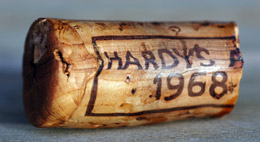 By the time we got to the 1968 the sun had set on the Sandia Mountains — we drank these beers on our back portal — and the lights had come up in the Rio Grande Valley. We weren’t comparing how each beer looked in the glass or taking notes; instead talking about things friends talk about, although that certainly included the aromas and flavors from the succession of beers.
By the time we got to the 1968 the sun had set on the Sandia Mountains — we drank these beers on our back portal — and the lights had come up in the Rio Grande Valley. We weren’t comparing how each beer looked in the glass or taking notes; instead talking about things friends talk about, although that certainly included the aromas and flavors from the succession of beers.
For the record, they were from 2003 (the first batch brewed at O’Hanlon’s), 1999 (the last batch brewed at Eldridge Pope), 1995, 1994, 1993, 1992 and then the 1968. [See yesterday’s post for details about how we got the 1968.]
Sorry, I don’t have a lot of adjectives for you. Perhaps that’s not in the spirit of blogging, but those are going to stay out there in the cool New Mexico air.
OK, since you guys pitched in with such friendly suggestions about dealing with the cork, just a few details. This was an “A” bottle, with the cork protruding from the top. When I gave it a gentle tug it broke off, leaving nicely solid cork in the neck.
That came out easily and cleanly with a corkscrew, emitting a surprising pop. We briefly discussed the implications — a little something wild going on after 40 years? First impressions included funky, adhesive and sewer water . . . but in a good way.
Within minutes those volatiles had faded. Still a lot going on in the glass, both great and not-so-great.
The best part? It sure as heck was still beer. And it sure as heck had soul.
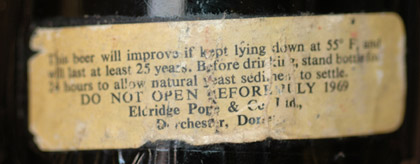
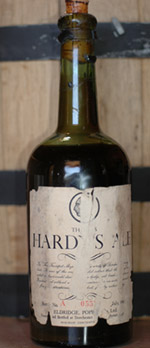 The time has come to open the 1968 bottle of Thomas Hardy’s Ale.
The time has come to open the 1968 bottle of Thomas Hardy’s Ale.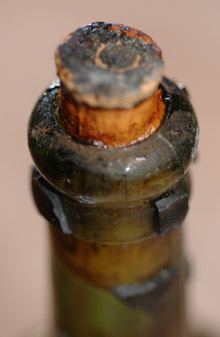 And when Daria bought it in an eBay auction the chap in the UK stated up front that he hadn’t treated the beer with the care stated on the back label (which sits on the bottle just as crooked as it looks in the photo above). But it didn’t seem right to set it out on shelf — because I want to look at it, that’s why — with the beer still inside. You’ll notice up top that the beer no longer reaches into the neck.
And when Daria bought it in an eBay auction the chap in the UK stated up front that he hadn’t treated the beer with the care stated on the back label (which sits on the bottle just as crooked as it looks in the photo above). But it didn’t seem right to set it out on shelf — because I want to look at it, that’s why — with the beer still inside. You’ll notice up top that the beer no longer reaches into the neck.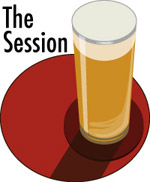 Writing about beer certainly changed my relationship with beer, and made what might look like a simple question next to impossible to answer.
Writing about beer certainly changed my relationship with beer, and made what might look like a simple question next to impossible to answer.